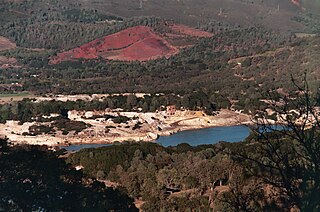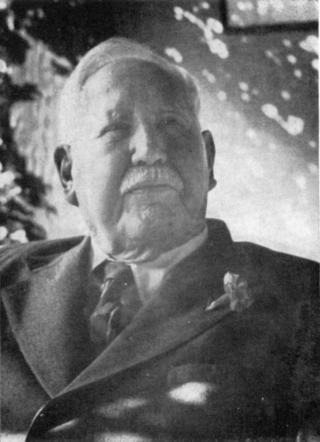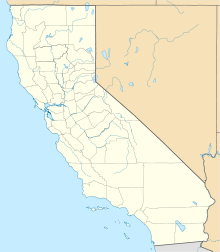The vanishing hitchhiker is an urban legend in which people travelling by vehicle, meet with or are accompanied by a hitchhiker who subsequently vanishes without explanation, often from a moving vehicle.
In ancient Greek literature, an eidolon is a spirit-image of a living or dead person; a shade or phantom look-alike of the human form.

The Sulphur Bank Mine is located near Clearlake Oaks and Clear Lake in Lake County, California. The 150-acre (0.61 km2) mine became one of the most noted mercury producers in the world.

Ulysses Simpson Grant IV was an American geologist and paleontologist known for his work on the fossil mollusks of the California Pacific Coast. He was the youngest son of Ulysses S. Grant Jr., and a grandson of President Ulysses S. Grant and Senator Jerome B. Chaffee. He was born at his father's farm, Merryweather Farm, in Salem Center on May 23 1893 Westchester County, New York. Shortly after his birth, the family moved to San Diego, California.
Rexford G. Newcomb was an American architectural historian.
George Woodman Hilton was a United States historian and economist, who specialized in social history, transportation economics, regulation by commission, the history of economic thought and labor history.
Todd Merlin Compton is an American historian in the fields of Mormon history and classics. Compton is a respected authority on the plural wives of the LDS Church founder, Joseph Smith.
James Brown Allen is an American historian of Mormonism and was an official Assistant Church Historian of the Church of Jesus Christ of Latter-day Saints from 1972 to 1979. While working as Assistant Church Historian, he co-authored The Story of the Latter-day Saints with Glen Leonard. After Ezra Taft Benson dismissed the book as secular new history, other events led to the dissolution of the LDS Church History department in 1982. Allen resigned as Assistant Church Historian in 1979, returning to work at Brigham Young University (BYU) full-time.

Alexander Hanchett Smith was an American mycologist known for his extensive contributions to the taxonomy and phylogeny of the higher fungi, especially the agarics.
Richard Douglas Poll was an American historian, academic, author and member of the Church of Jesus Christ of Latter-day Saints. His liberal religiosity influenced his notable metaphor about "Iron Rod" vs. "Liahona" LDS Church members.
Francis Harper was an American naturalist known for the study of the 18th-century American naturalists John and William Bartram. His research included studies of the Okefenokee Swamp and fieldwork in the north eastern United States and in northern Canada, and authored new combinations for two species originally described by William Bartram, Garberia heterophylla and Roystonea elata.

Eugene Edward "Gene" Campbell was an American professor of history at Brigham Young University.

George Wilkes was an American journalist and newspaper editor. A native of New York State, he became a journalist and after losing a libel case was imprisoned in New York City's jail; he wrote a pamphlet on the jail's conditions in 1844 based on his stay. The following year, Wilkes and a friend started publishing the National Police Gazette, a newspaper on crime reporting and other sensationalistic topics. In 1856 Wilkes bought a sporting newspaper called the Spirit of the Times, which he had previously worked for.

Rodman Wilson Paul was an American historian who taught at the California Institute of Technology. He was known primarily as a foremost authority on California mining and agricultural Native American history.
Edward Leo Lyman III is an educator, historian, author, and philanthropist. He has taught and published books and articles on the history of the western United States for over 35 years. He received his doctorate from University of California, Riverside in 1981.

Brigham Dwaine Madsen was a historian of indigenous peoples of the American West, of the people of Utah and surrounding states, and of Mormonism. He was a professor at the University of Utah.

Henry Raup Wagner was an American book collector, bibliographer, cartographer, historian, and business executive. He was the author of over 170 publications, including books and scholarly essays, mainly about the histories of the American frontier and the Spanish exploration and colonization of Mexico. He also assembled tens of thousands of books and manuscripts and formed several collections from them.
W. Turrentine "Turpie" Jackson was an American professor of history, specializing in Western U.S. history.
Henry Arlin Turner was an American biographer and professor of English, specializing in American literature of the 19th century.
Oscar Osburn Winther was a history professor, specializing in the history of the western United States. He was the president of the Western History Association from 1963 to 1964 and the president of the Oral History Association from 1969 to 1970.







